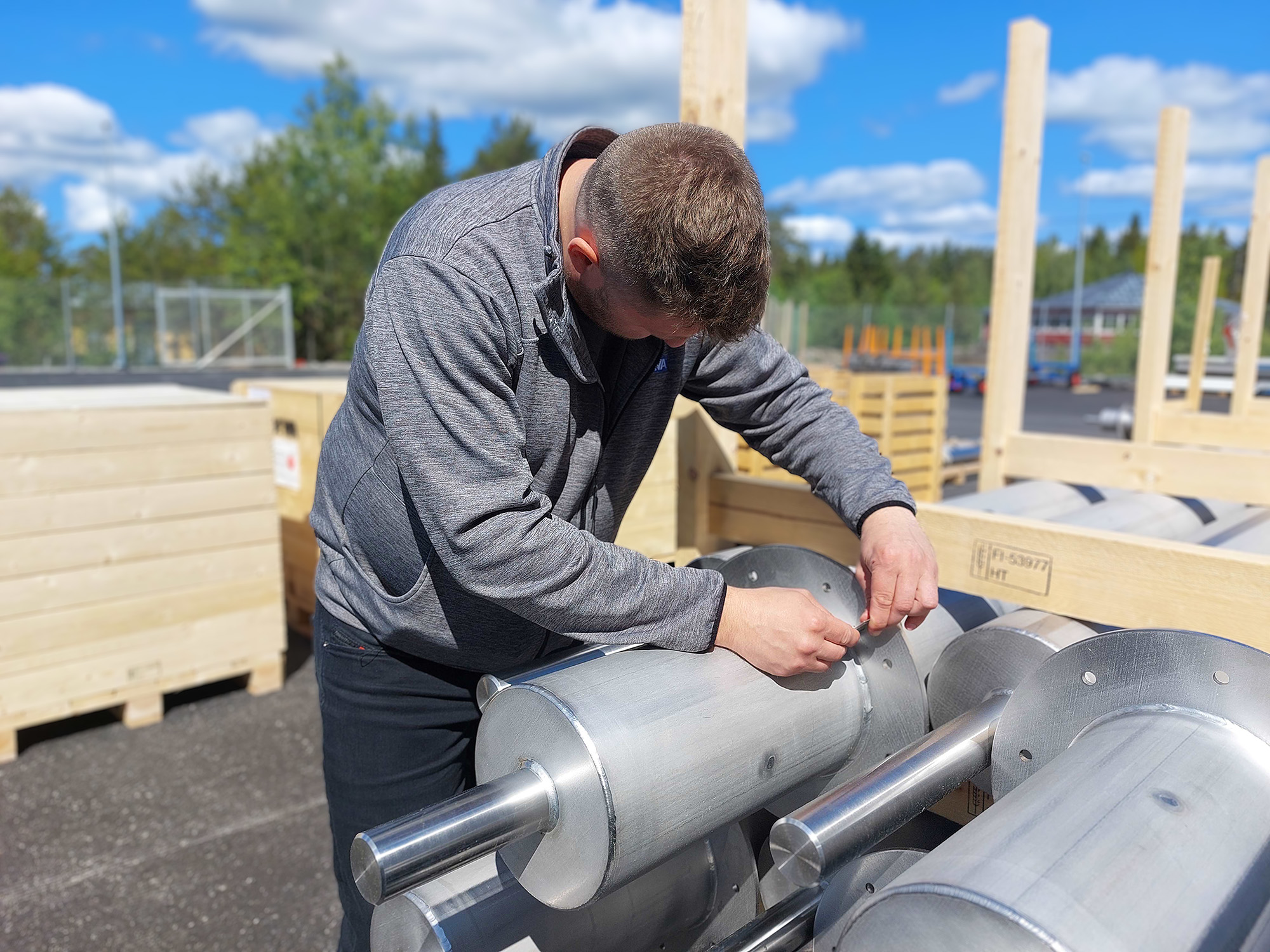The Ultimate Overview to Welding Inspection Racine for Industrial Standards
The Ultimate Overview to Welding Inspection Racine for Industrial Standards
Blog Article
Cutting-edge Approaches to Fillet Weld Evaluation and Screening: Enhancing Weld Quality and Conformity Standards
In the realm of welding, the quality and stability of fillet welds play an essential duty in making certain the structural soundness and integrity of different commercial elements. With the constant drive for enhanced efficiency and conformity with strict criteria, the exploration of innovative methods to fillet weld inspection and testing has actually ended up being vital.
Advanced Non-Destructive Screening Techniques
Making use of cutting edge modern technologies, advanced non-destructive screening methods play a critical role in making certain the stability and top quality of fillet welds. These methods, such as phased variety ultrasonic testing (PAUT) and magnetic fragment testing (MPT), deal in-depth understandings into the weld's inner structure without triggering any kind of damage to the product. PAUT, for example, uses multiple ultrasonic aspects to inspect the weld from numerous angles, providing a detailed visualization of potential flaws like absence of fusion or fractures.
In A Similar Way, MPT works in finding surface-breaking defects by applying an electromagnetic field and iron bits to the weld location. This approach is particularly helpful for recognizing interruptions that may jeopardize the weld's toughness. By employing these sophisticated non-destructive screening techniques, weld assessors can accurately examine the top quality of fillet welds, ensuring conformity with industry standards and guidelines. The ability to spot problems early not only improves weld high quality but also avoids expensive rework or failings in architectural stability, underscoring the importance of these ingenious screening methods in welding assessments.
Robotics and Automation in Examination
The combination of robotics and automation has changed the assessment process for fillet welds, boosting effectiveness and accuracy in top quality analysis. Robotics use exact control and repeatability in checking welds, making certain reputable and regular results. Automated systems can be set to comply with details assessment paths, making sure extensive insurance coverage of welds and decreasing the threat of human error.
Robot examination systems geared up with innovative sensors can find and gauge weld features with high accuracy, providing comprehensive information for evaluation. These systems can identify flaws such as splits, lack of combination, and porosity, making it possible for punctual rehabilitative activities to be taken. Additionally, robotics and automation enable for real-time information collection and evaluation, providing immediate comments to drivers and facilitating quick decision-making processes.
Moreover, the usage of robotics and automation in fillet weld inspection enhances general performance by lowering inspection times and enhancing evaluation throughput. By enhancing the examination procedure, manufacturers can ensure weld quality and compliance standards are satisfied effectively, inevitably bring about set you back financial savings and boosted item top quality.
Making Use Of Expert System for Evaluation
Artificial intelligence plays a pivotal role in enhancing the efficiency and accuracy of analysis in fillet weld inspection processes. By utilizing the power of AI, examiners can improve the evaluation of weld top quality and conformity requirements, causing a lot more exact and trusted results. AI algorithms can swiftly refine large amounts of information from weld inspections, identifying issues or incongruities that might be testing to relate to the naked eye. This advanced technology makes it possible for real-time surveillance of weld high quality, permitting immediate rehabilitative actions to be taken if any issues are identified.
In addition, AI systems can pick up from previous assessment information, constantly improving their capability to identify prospective defects and variances in fillet welds. This flexible understanding capability boosts the overall high quality control process, lowering the possibility of human mistake and ensuring that welds satisfy the needed criteria. By integrating expert system into fillet weld evaluation, industries can attain greater degrees of performance, consistency, and compliance in their examination techniques.
Portable Devices for On-Site Evaluation
 Enhancing field inspection performance, the fostering of portable devices reinvents on-site analysis procedures for fillet welds. These devices supply adaptability and convenience, enabling examiners to carry out detailed examinations in various places, consisting of remote or challenging environments. Portable devices such as ultrasonic screening tools, magnetic fragment inspection equipment, and digital radiography systems provide real-time data and high-resolution imaging capabilities, enabling quick decision-making and immediate responses on weld top quality.
Enhancing field inspection performance, the fostering of portable devices reinvents on-site analysis procedures for fillet welds. These devices supply adaptability and convenience, enabling examiners to carry out detailed examinations in various places, consisting of remote or challenging environments. Portable devices such as ultrasonic screening tools, magnetic fragment inspection equipment, and digital radiography systems provide real-time data and high-resolution imaging capabilities, enabling quick decision-making and immediate responses on weld top quality.One basics substantial benefit of mobile tools is their ability to streamline inspection procedures, reducing downtime and boosting total efficiency. Examiners can easily transfer these tools to various task sites, eliminating the demand for transporting hefty equipment or navigate to this site elements to off-site facilities. In addition, the transportability of these devices promotes cost-effectiveness by minimizing transport costs and accelerating inspection timelines.
In addition, the usage of portable devices for on-site assessment advertises proactive top quality control procedures, as inspectors can without delay determine and deal with any kind of prospective welding defects or disparities. By integrating these innovative modern technologies into on-site examination methods, welding professionals can make certain compliance with industry criteria and enhance weld quality, inevitably bring about boosted architectural honesty and safety and security in different welding applications.
Combination of Information Administration Solution
Having enhanced on-site evaluation processes with the utilization of portable devices, the next stage involves the seamless assimilation of data monitoring systems to even more enhance efficiency and information evaluation capabilities in fillet weld examination and testing. Welding Inspection Racine. By integrating information monitoring systems into the assessment process, companies can improve information collection, storage, and evaluation. This assimilation permits real-time monitoring of weld high quality, immediate recognition of issues, and prompt decision-making to correct any type of concerns that might occur throughout the evaluation process
The combination of data administration systems enables smooth communication between different stakeholders entailed in the assessment procedure, promoting cooperation and improving total high quality control actions. Ultimately, the assimilation of data administration systems offers to raise the criteria of fillet weld assessment and screening, guaranteeing conformity with industry guidelines and enhancing weld high quality.
Conclusion
In final thought, cutting-edge methods to fillet weld examination and testing have actually significantly improved weld top quality and compliance requirements. Advanced non-destructive screening methods, robotics, automation, expert system, portable tools, and data monitoring systems have actually transformed the means weld evaluations are conducted. By utilizing these innovations, industries can guarantee that welds satisfy the called for top quality standards and policies, eventually enhancing total efficiency and safety in welding processes.

By employing these sophisticated non-destructive testing methods, weld assessors can properly analyze the top quality of fillet welds, ensuring compliance with market requirements and guidelines. Mobile devices such as ultrasonic testing devices, magnetic bit assessment devices, and digital radiography systems offer real-time data and high-resolution imaging capabilities, enabling fast decision-making and prompt responses on weld high quality.
Having actually maximized on-site examination procedures with the utilization informative post of portable devices, the following phase involves the smooth assimilation of data administration systems to even more boost performance and information analysis capabilities in fillet weld inspection and screening (Welding Inspection Racine). Eventually, the integration of information administration systems serves to boost the criteria of fillet weld evaluation and screening, making sure compliance with sector guidelines and enhancing weld top quality
 In conclusion, cutting-edge techniques to fillet weld assessment and testing have actually substantially enhanced weld top quality and compliance standards.
In conclusion, cutting-edge techniques to fillet weld assessment and testing have actually substantially enhanced weld top quality and compliance standards.Report this page